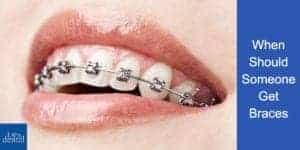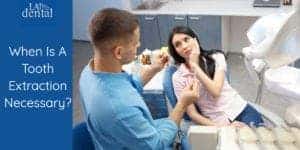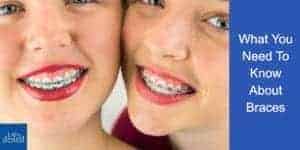When you begin orthodontic treatment and your teeth are examined, the treatment plan you receive is (or should be!) designed to match your specific needs. In the world of orthodontics, there’s no such thing as one-size-fits-all: the type of bite you have plays a large role in what kind of devices and braces you are prescribed.
Patients with fully functional bites have top and bottom teeth that meet evenly both vertically and horizontally, with a slight overbite that doesn’t exceed 5%. However, when you try to close your mouth and you find your teeth aren’t fitting together comfortably, you may have a bite problem. There are generally three types of bite problems that can be rated from mild to severe.
- Overbite
- Underbite
- Crossbite
What are these bite problems and how can they be fixed?
Overbite
If your upper front teeth overlap your lower front teeth, then you have an overbite. Not all overbites are considered worthy of orthodontic intervention.
In fact, it’s actually good to have a mild overbite. If your overbite is too small, your top and bottom front teeth will touch, which gives no leeway for a full range of motion when chewing. When an overbite is too big, it’s called a deep bite, which can cause a few problems:
- Uneven wear on teeth
- Affecting your looks and self-esteem
- Jaw pain
- TMJ problems
Overbites are quite common and easy to treat with the right orthodontic devices.
- Braces- A mild overbite can be corrected with braces or a clear tooth aligner like Invisalign®.
- Headgear- A more severe overbite is going to need heavy-duty braces coupled with headgear to correct the shape of the jaw and teeth.
- Tooth extraction- Sometimes tooth crowding worsens an overbite. In this case, tooth extraction becomes necessary to make the top palate smaller.
Underbite
When your lower teeth and law come forward more than your upper teeth, you have an underbite. Most people get an underbite from their genetic code, thumb sucking, or extended bottle use. Those who have an underbite experience symptoms similar to patients with an overbite:
- Uneven wear on teeth
- Affecting your looks and self-esteem
- Jaw pain
- TMJ problems
Underbites can be fixed with a few orthodontic treatments.
- Braces- Most underbites can be fixed with braces, which may be enhanced with a couple orthodontic tools.
- Palate Expander- This will widen the top palate so that the bottom teeth no longer overlap the top teeth. Teens and children benefit the most from this device.
- Headgear- When coupled with braces, the shape of the jaw can be corrected to eliminate the underbite. Headgear normally only works when the jaw is still growing, so it is also best for teens. Once, you are an adult, you may need surgery to correct a severe underbite.
- Retainers- These can be worn after the braces are taken out. In the case of a mild underbite, clear aligners can be used to correct the bite.
- Surgery- In extreme cases and only as a last resort is this method used. Most underbites can be resolved by using non-surgical methods.
Crossbite
Crossbite is basically a bite that doesn’t match well horizontally. When you bite down, your molars won’t match, which can cause a few orthodontic problems. Whether they are posterior or anterior crossbites, the consequences of not treating this incorrect bite can be more serious than those associated with underbites or overbites.
- Tooth decay
- Gum disease
- Jaw Pain
- TMJ problems
- Chronic pain in the neck and back
- Asymmetrical face
- Self-esteem issues
- Tooth grinding (bruxism)
Crossbites very rarely correct themselves and need orthodontic treatments to be resolved. Here are some of the most effective measures taken to fix the bite before it can affect the patient’s life too much.
- Braces- Patients with a crossbite will need braces as a starting point to address their bite issues. The devices that can be used with braces can then work their magic.
- Palate Expander- This will widen the top palate to help adjust the crossbite. Teens and children benefit the most from this device. Palatal expanders can be used to do short term braces while the jaw is still growing and avoid major braces later on in life.
- Headgear- When coupled with braces, the shape of the jaw can be changed to make the face develop evenly.
- Removable Expander- This device can be worn at night as a good alternative treatment for adults who have minor crossbites.
- Surgery- In extreme cases, expanding the palate by surgery is necessary. An oral surgeon will break your jaw in a few places, after which you’ll be fitted with a device that will guide your jaw to grow into a proper shape. The results of this surgery will be more dramatic than anything a non-surgical palate expander can do.
Do you have a bite problem?
If any of these bite issues sound like something you or your child may be dealing with, please schedule a consultation with us as soon as possible. Children and teens have the best chance at early intervention for bite correction and can avoid major orthodontics or even surgery later in life.
There are also plenty of options for adults to fix their bite issues before they cause more pain or orthodontic problems. For the best dental care in Los Angeles, contact us.



